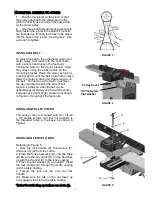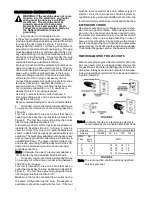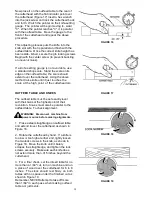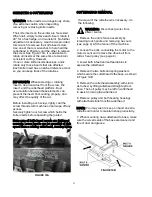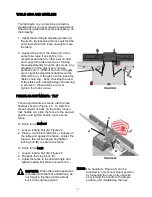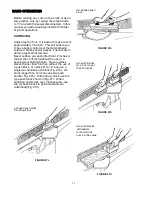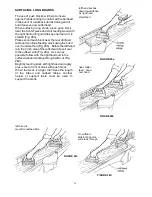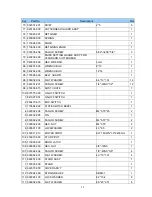
14
Fence Stop Adjustments
Periodically check the 90° and 45° backward
(135°) tilt accuracy of the fence with an angle
measuring device, such as an adjustable
square or machinist’s protractor.
90º Fence Adjustment
Referring to Figure 24A:
The 90º stop is controlled by the stop bolt (E)
and the stop plate (C).
1. Set the infeed table to approximately the
same height as the outfeed table.
2. Move the fence by releasing lock handle
(D) and pushing the fence assembly
until it overlaps the tables (B).
3. Tighten lock handle (D).
4. Adjust the fence to a 90º angle by releasing
lock handle (J) pulling up on the fence
handle and tightening the lock handle (J).
Note: The stop bolt (E) should be resting
against the stop plate (C).
5. Place an angle measuring device on the
table and against the fence to confirm a 90º
setting (A, Fig. 25).
6. If the fence is not square to the table,
release the lock handle (J), loosen the hex
nut (F), and turn the stop bolt (E) until the
fence is square to the table.
7. Tighten the lock nut (F) to retain the setting.
Tighten the lock handle (J).
FIGURE 24A
FIGURE 25
FIGURE 25
FIGURE 25
45º Fence Backward Stop Adjustment
Referring to Figure 26:
The 45º fence backward stop (fence
positioned away from the operator) is
controlled by the stop bolt (E).
1. Loosen the lock handle (A). Move the
stop plate (D) out of the way and position
the fence at the 135º angle. Make sure
the fence sits against the stop bolt. (E).
2. Tighten the lock handle (A)
3. Place an angle measuring device on the
table and against the fence to confirm a
135º setting
(A Fig.27).
4. To adjust, loosen the lock nut (F), turn the
stop bolt (E) until a 135º angle is obtained.
5. Tighten the lock nut (F).
FIGURE
26
FIGURE
27
B
A
C
J
D
F
E
G
H
A
A
D
B
C
E
F
A






